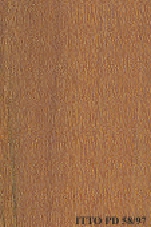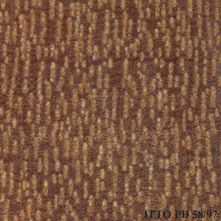
COULA (Coula edulis)
Trade Name
Coula
Scientific Name
Coula edulis Baill.
Family
OLACACEAE
Common Names
Ivianlegbe (Nigeria); Attia (Côte d`Ivoire); Ewoumeu (Gabon); Kumunu (Congo); Woula (Cameroon); Kommol (Cameroon); Ewomé (Cameroon); Engom (Cameroon); Coula (Cameroon); Srah; Sra; Okolla; Nkula; Kumunu-kumunu; Gabon nut; Ewoumeu; Ewome; Ebo; Coula; Bogue; Bodwe; Attia; Atsan; Almond wood; Akion; African walnut
Description Of The Tree
Botanical Description
The tree is 18 to 37 m tall, with diameters from 60 to 90 cm. The bole is occasionally irregular, clear up to 21 m. It presents claw roots.
Natural Habitat
Coula edulis prefers rain forests, evergreen or dense deciduous forests, and is found as a dominant in primitive forests.
Wood Identification
Anatomic Description Of Wood
Wood diffuse porous. Occasionally vessels exclusively solitary (over 90%). Tangential diameter of vessel lumina 100 to 150 micras (small). Tyloses thin walled. Non-vestured pits. Vessels per mm2 10 to 20 (abundant). Scalariform perforation plates with 5 to 15 b Apotracheal axial parenchyma diffuse and/or diffuse in aggregates. Prismatic crystals in short chains in chambered axial parenchyma cells. Over 9 cells per parenchyma strand. Rays more than 10 per mm (abundant). Rays non-storied. Rays 1 to 4 seriate. Heterogeneous rays and/or multiseriate heterogeneous rays. Non-septate fibers. Fibers with simple to minutely bordered pits.
-
 Wood Macro Photo Tangential Plane
Wood Macro Photo Tangential Plane
-
 Wood Micro Photo Of Transversal Section
Wood Micro Photo Of Transversal Section
Availability
Cites Status
Unrestricted
General Wood Description
Color
The sapwood is pinkish brown. The heartwood is red-brown or wine-colored with brown veins and markings, it is not clearly demarcated.
COLOR INDEX (1=Black, 7=Light yellow,white)
4
Grain
Straight or slightly interlocked; grain has no particular influence on drying, machining and finishing qualities.
Texture
The wood is typically fine in texture.
Luster
Luster is usually low.
Natural Durability
Very durable to decay; without preservative treatment. This species is especially suited for all the uses with risks of permanent or long-lasting humidification. Resistant to termites attack. Heartwood is resistant to Lyctus attacks.
Natural durability index (1= Very high durability, 7=Vey low durability)
1
Internal Growth Stresses
No residual growth stresses are found.
Silica Content
Silica Content: Negligible content of silica is reported. Amounts over 0.05% may affect wood processing. Silica Value: 0.01
Resistance To Impregnation
Difficult to treat with only a low penetration of the preservative products.
Wood Physical Properties
Basic Density or Specific Gravity (O.D. weight/vol. green) (g/cm³)
0.87
Air-dry Density (Weight and volume at 12%MC) (g/cm³)
1.01
Total shrinkage Tangential (Saturated to 0%MC) (%)
8.5
Total shrinkage Radial (Saturated to 0%MC) (%)
4.5
Drying Defects
Ease of Drying: Air drying is without undue difficulty. Drying Defects: It has a tendency to end-splitting.
Recommended Dry Kiln Schedule
FR-9
Dimensional stability ratio (Total Tangential Shrinkage %/Total Radial Shrinkage %)
1.9
Wood Chemical Properties
Wood Mechanical Properties
Bending Strength (MOR),12%MC (kgf/cm²)
1443
Stiffness (MOE) 12%MC (kgf/cm²)
198650
Compression parallel to fiber 12%MC (kgf/cm²)
794
Compression perpendicular to fiber 12%MC (kgf/cm²)
115
Shear strength radial 12%MC (kgf/cm²)
114
Janka hardness (side) 12%MC (kgf)
1296
Janka hardness (end grain) 12%MC (kgf)
1285
Workability
Sawing
Sawing of this species requires powerful equipment.
Rotary Veneer Cutting
Not suitable for veneering.
Sliced Veneer
Not suitable for veneering.
Blunting Effect
Moderate blunting effect; stellited blades for sawing and carbide tools for machining are advised.
Machining
It needs powerful tools for processing. Possible difficulties caused by interlocked grain are reported.
Planing
Moderately easy; tools must be cautiously sharpened.
Moulding
Moderately easy; tools must be cautiously sharpened.
Boring
Moderately easy; tools must be cautiously sharpened.
Mortising
Moderately easy; tools must be cautiously sharpened.
Nailing
Pre-boring is necessary.
Gluing
Difficult to glue because of high density.
Sanding
Easy to perform; it gives good results.
Polishing
Can be polished without surface preparation.
Response To Hand Tools
Working with hand tools is difficult.
REFERENCED USES
End Uses Summary
EXTERIOR GENERAL, poles, paling, stakes posts, crossarms, crossties, HOUSING GENERAL, beams, joists, boards, flooring, parquet, frames, CONTAINERS, truck bodies, truck flooring
Exterior General
- 1 - Tabela de resultados de ensaios fisicos e mecanicos
Poles
- 3 - Estudo dendrologico e determinacao das caracteristicas fisicas e mecanicas do genipapo (Genipa americana)
Paling Fence Pickets
- 4 - Estudo dendrologico e determinacao das caracteristicas fisicas e mecanicas da bicuiba
Stake Posts
- 5 - Propriedades fisicas e mecanicas da madeira e do contraplacado de Pinus elliottii
Crossheads Crossarms
- 7 - Maderas latinoamericanas. II, Quercus alata Q. costaricensis y Q. eugeniaefolia
Crossties
- 8 - Maderas latinoamericas. III, Podocarpus standleyi ,Podocarpus oleifolius, Drims granadensis, Magnolia poasana y Didymopanax pittieri
General Housing
- 10 - Silica in Timbers
Beams
- 11 - Prospect: The wood database
Joists
- 12 - Tropical timbers of the world. Part I-Tropical American Species
Boards
- 13 - Dry kiln schedules for commercial woods. Temperate and tropical. Section III. Latin American (Mexico, Central, and South America) Woods–Conventional Temperatures
Flooring
- 14 - Handbook of Hardwoods
Parquet
- 15 - Empire Timbers
Frames
- 16 - Woods of the World
Truck Body
- 53 - Timbers of the New World
Truck Flooring
- 54 - Bulletin of the Government Forest Experiment Station N.157: Identification of Tropical Woods
Please Provide Information To View Producer Information